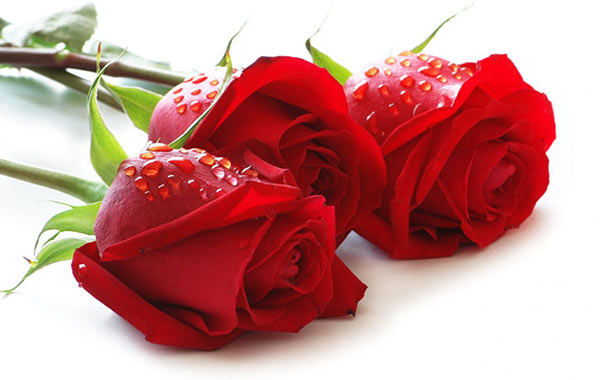What is "Valentines Day" and why do we celebrate it ??
When we talk about "Valentines Day" what is the first thing comes in your mind ???? Offcourse its "Love". We all are celebrating valentines day for so many years, do you even know from where the valentine word came from and why "Valentines Day" is being celebrated all over the world, if you don't know then we will be telling you the complete story of this special day called " Valentines Day"
Now the question comes what is Valentine's Day all about?
So the answer to the following question is that every year on February 14th, there are so many people around the world who celebrate "Valentine's Day" with their special “Valentine” by showing appreciation for the people they love, affection or adore. There also people who love to take their loved ones for a romantic dinner at a restaurant, while others may choose this day to propose or get married. On this day many people give greeting cards, chocolates, jewellery, gifts or flowers.

The history of Valentine's Day?
The history says that from Feb. 13 to 15, the Romans celebrated the feast of Lupercalia and The Emperor called Claudius II executed two men both named Valentine on Feb. 14 of different years in the 3rd century A.D. So, their martyrdom was honoured by the Catholic Church with the celebration of St. Valentine's Day. One legend contends that Valentine was a priest who served during the third century in Rome. When Emperor Claudius II decided that single men made better soldiers than those with wives and families, he outlawed marriage for young men. Valentine, realizing the injustice of the decree, defied Claudius and continued to perform marriages for young lovers in secret. When Valentine’s actions were discovered, Claudius ordered that he be put to death.
There are some other stories which also suggest that Valentine may have been killed for attempting to help Christians escape harsh Roman prisons, where they were often beaten and tortured. According to one legend, an imprisoned Valentine actually sent the first “valentine” greeting himself after he fell in love with a young girl–possibly his jailor’s daughter–who visited him during his confinement. Before his death, it is alleged that he wrote her a letter signed “From your Valentine,” an expression that is still in use today. Although the truth behind the Valentine legends is murky, the stories all emphasize his appeal as a sympathetic, heroic and–most importantly–romantic figure. By the Middle Ages, perhaps thanks to this reputation, Valentine would become one of the most popular saints in England and France.
During the Middle Ages, it was commonly believed in France and England that February 14 was the beginning of birds’ mating season, which added to the idea that the middle of Valentine’s Day should be a day for romance.
Who was Saint Valentine and what did he do?
As mentioned above Valentine was a temple priest who was beheaded near Rome by the emperor named Claudius II for helping Christian couples wed. There are the different account which claims that Valentine was the Bishop of Terni, who was also martyred by Claudius II on the outskirts of Rome.
Now the question comes into our mind that, What happened to Saint Valentine and who killed him ??
So the answer to this question is that on February 14 around the year 278 A.D Valentine was executed.
Under the rule of Claudius the Cruel, Rome was involved in many unpopular and bloody campaigns. The emperor had to maintain a strong army but was having a difficult time getting soldiers to join his military leagues. Claudius believed that Roman men were unwilling to join the army because of their strong attachment to their wives and families.
To get rid of the problem, Claudius banned all marriages and engagements in Rome. Valentine, realizing the injustice of the decree, defied Claudius and continued to perform marriages for young lovers in secret.
When Valentine’s actions were discovered, Claudius ordered that he be put to death. Valentine was arrested and dragged before the Prefect of Rome, who condemned him to be beaten to death with clubs and to have his head cut off. The sentence was carried out on February 14, on or about the year 270.
Legend also has it that while in jail, St. Valentine left a farewell note for the jailer’s daughter, who had become his friend, and signed it “From Your Valentine.”
Info Source: History Channel.
Valentine's Day, also called Saint Valentine's Day or the Feast of Saint Valentine, It is treated as an annual holiday which is being celebrated on February 14.
Symbols which are associated with " Valentines Day"
There are very many symbols which are associated with this lover’s day vary and have been used from time and again. We have the popular heart sign up to the less popular one, the rebus. Let us mention them in no special way, just randomly.
The Heart Sign
Many people believe that the heart is where all the feelings reside. So when you draw a heart to someone on Valentine’s day, it symbolizes that you are giving them your love feelings selflessly without reservation.
The Ribbons, Laces and Frills
Remember those days when knights used to ride into battlefields sporting the handkerchief given to them by their lovers. In ancient times, Laces were used in making women’s handkerchiefs. So when a woman dropped a handkerchief in the path of a man, this man automatically knew that the lady wanted him to love her.



Cupid
Cupid is an ancient mythological god, who is traditionally ascribed to the love and feel a woman and a man feel for each other. It is a Latin word meaning “ desire.” It is a sign which is represented by a symbol of a naked boy with wings and having a funny smile. With him is a bow and arrows which are supposedly used to shoot the hearts of maidens and youth.
The Rose
Since ancient times, roses have been a symbol of love expression. The word eros is gotten from juggling the letters of the word Rose; he is a god of love. This makes the rose to be the choice of loves for time immemorial. The red colour is associated with strong emotions,Info Source: https://www.insbright.co.
Here we do mention the Valentine week celebrated across the world, Valentines Day's importance is very much among the youth and especially for lovers. But you should know that the seven days before the Valentine's Day is known as Valentine Week in India. The youth and the lovers wait a whole year for this week. They celebrate this week with zeal and enthusiasm.
List of Valentine weekdays
Rose Day
Propose Day
Chocolate Day
Teddy Day
Promise Day
Hug Day
Kiss Day
Valentine Day




















